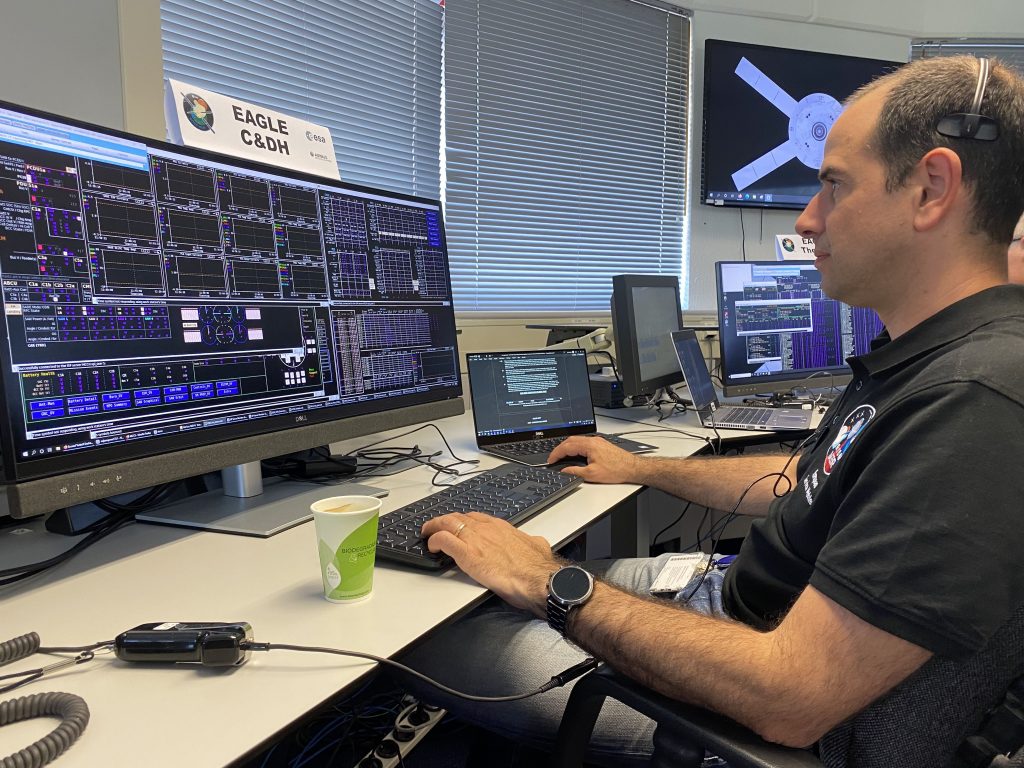What is your name and your role on the European Service Module team?
Luca Fossati, I am the responsible for the coordination of the activities in the domain of Avionics, Power, Electromagnetic Compatibility (EMC) and software as well and the Communication and Data Handling ESM position lead for the Artemis I flight operations.
How long have you been involved in European Service Module’s development and what are your tasks?
I have been involved in ESM for the last eight years, first only part-time providing specialist technical support on FPGA design (FPGAs are part of the electronic units computers: Field-Programmable Gate Array), then I started full time supporting Avionics units design, manufacturing and testing and, finally, since February 2021 I started as responsible for the Avionics, Power, EMC, Software areas for the whole European Service Module.

What is your educational background? How did you come to work on European Service Module?
I am a software engineer with a Ph.D. in Microelectronics. I first started working at ESA on research and development in the field of microelectronics and providing specialist technical support to various missions and projects in the field of FPGAs. By chance I got involved with the European Service Module project to help the FPGA design and from there I got more and more involved.
What is the most notable or memorable moment during your time working on European Service Module?
There have been many memorable moments, probably the most important one has been to see the whole assembled Orion spacecraft in the Thermal Vacuum Chamber at NASA’s Plum Brook facility and participating with Airbus, NASA and Lockheed Martin colleagues to the test campaign.
Due to the dynamic and challenging nature of the test campaign (the Orion spacecraft was locked in a room emulating the extreme environmental conditions encountered in space) monitoring the health and performance of the spacecraft during the test was giving almost the same feeling as monitoring the spacecraft during its upcoming first flight.
What does it mean to you to be part of the larger team helping to get humans back on the Moon?
I am very proud to be part of what is probably the most important space project after Apollo and the first step of taking human life out of low Earth orbit. ESA, Airbus, NASA, Lockheed Martin are really working and cooperating together as a single team of colleagues and friends and this provides a unique feeling of belonging.

What is one thing you’d like the European public to know about your job?
My job, like the one of many other colleagues consists not only in coordinating the design and development of the electronics and electrical parts of the European Service Module, but also in participating to the flight operations, monitoring the health of ESM and ensuring that its performance is perfect in view of the next flights, when there will be astronauts on board.
Do you have any advice for future generations interested in space exploration?
We are living at an incredible moment for human space exploration and the exploitation of space in general, with a strong push both from governmental and commercial sectors to advance the exploration of the Solar System and beyond and concrete plans to establish permanent human presence on the Moon. There will be more and more opportunities to work in the space business so study, apply yourself and follow your dreams, they will eventually come true.

 Automated Transfer Vehicle page
Automated Transfer Vehicle page ATV blog archive
ATV blog archive
Discussion: no comments